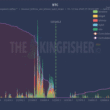Crypto markets saw heightened volatility this week as Circle’s stock surged on pivotal U.S. legislation, while traders tracked major macro developments and industry announcements. With stablecoin adoption smashing new records, all eyes remain on regulatory and geopolitical catalysts shaping the digital asset landscape.
Circle’s Rally Follows GENIUS Act Progress
Circle, a leading stablecoin firm, witnessed its stock price jump after the U.S. Congress advanced the GENIUS Act. The bill aims to provide clearer rules for digital assets, sparking optimism among investors that regulatory momentum will benefit companies at the intersection of fintech and blockchain. Former President Donald Trump publicly advocated for the House to expedite the act, signaling growing political support for crypto policy clarity.
Regulatory Shifts and Adoption Milestones
Legislative action wasn’t the only positive signal for crypto’s march into the mainstream. In a notable win for everyday users, Ohio announced it will exempt Bitcoin payments under $200 from taxation, reducing friction for micro-transactions and retail use. Meanwhile, the total market capitalization for stablecoins now stands above $250 billion—a record that underscores rapid institutional and consumer adoption of blockchain-based financial instruments.
Key Stats & Figures
- Circle Stock: Surged on news of the GENIUS Act’s progress and political support.
- Stablecoin Market Cap: Now exceeds $250 billion, reflecting rapid sector growth.
- Crypto Lender Assets: Crypto lending platforms now hold $60 billion in assets.
- Lion Group Funding: Raised $600 million for their HYPE treasury initiative.
Market Utility Expands: Exchange and Collateral Innovations
Major exchanges are doubling down on enhancing crypto’s financial utility. Coinbase introduced support for USDC as collateral, alongside ‘Coinbase Payments’—moves that sent its stock higher. CryptoCom and Deribit are also integrating BUIDL as collateral, making it easier for institutional clients to access new trading strategies without converting assets. Brokerages like FalconX are now exploring initial public offerings to fuel continued growth, and Jump Trading is preparing to re-enter the crypto fray, adding firepower to market liquidity.
Conclusion: What This Means for the Market
The recent surge of regulatory activity, adoption initiatives, and platform innovation demonstrates that crypto is pushing ever deeper into both mainstream finance and the broader economy. While geopolitical events and macro headwinds continue to create price turbulence, the underlying momentum for digital assets appears robust—setting the stage for further institutional and retail participation throughout 2024.
